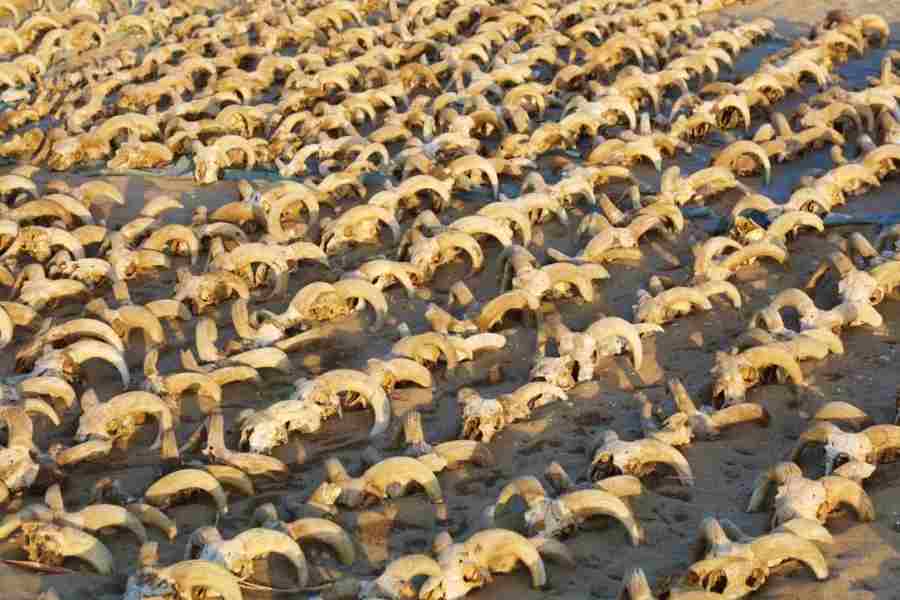Mon 27 March 2023:
The tourism and antiquities ministry announced on Sunday that archaeologists in Egypt have found more than 2,000 ancient mummified sheep heads that were left as sacrifices in a temple to the pharaoh Ramses II.
At Abydos, a southern Egyptian site renowned for its temples and tombs, a group of US archaeologists from New York University also exhumed the mummies of dogs, goats, cows, gazelles, and mongooses.
The American archaeological mission of New York University, working in the area of the temple of King Rameses II in Abydos, uncovered more than 2,000 mummified #rams' heads from the Ptolemaic era, in addition to a huge building from the Sixth Dynasty.#Egypt #discovery pic.twitter.com/H3pxy3pjbq
— Ministry of Tourism and Antiquities (@TourismandAntiq) March 26, 2023
Sameh Iskandar, head of the American mission, said the ram heads were “offerings” indicating “a cult to Ramses II celebrated 1,000 years after his death”.
Ramses II reigned over Egypt for nearly seven decades, from 1304 to 1237 BC.
Mostafa Waziri, head of Egypt’s Supreme Council of Antiquities, said the finds will help people know more about the temple of Ramses II and the activities which took place there from its construction between 2374 and 2140 BC and the Ptolemaic period, from 323 to 30 BC.
Archaeologists also found the remains of mummified animals and a palace with five-meter-thick (16-foot) walls that was built about 4,000 years ago.
A number of statues, papyri, the remains of old trees, leather clothing, and shoes were also discovered.
Abydos, which is located on the Nile river about 435 kilometers (270 miles) south of Cairo, is renowned for its necropolises and temples, including the temple of Seti I.
New archeological discoveries are frequently announced in Cairo, though some have questioned whether this is more for political and economic impact than for scientific or historical significance.
Egypt, a country of 105 million people, is in the midst of an economic crisis and generates 10% of its gross domestic product (GPD) from tourism, which employs 2 million people.
By 2028, Cairo wants to double the number of tourists visiting the city, from the 13 million who came before the coronavirus pandemic to 30 million.
Critics, however, draw attention to the deteriorated condition of some museums and archaeological sites.
SOURCE: INDEPENDENT PRESS AND NEWS AGENCIES
___________________________________________________________________________________________________________________________________
FOLLOW INDEPENDENT PRESS:
TWITTER (CLICK HERE)
https://twitter.com/IpIndependent
FACEBOOK (CLICK HERE)
https://web.facebook.com/ipindependent
Think your friends would be interested? Share this story!






